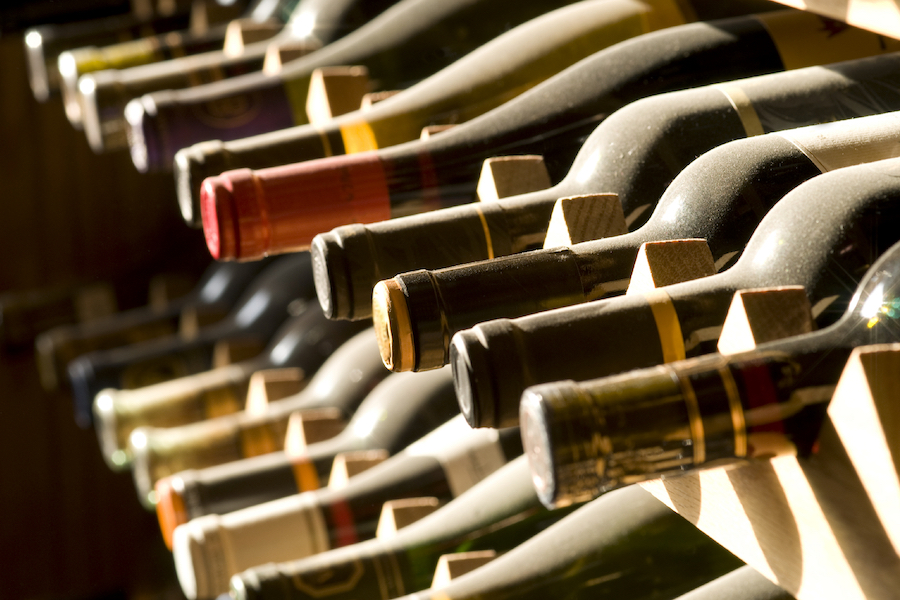Why invest in wine? A potted history of the wine investment market part 1 (Feb. 2015)
by cescriva
2019-03-25

The basic premise for investing in fine wine is a very simple one; you buy a truly great wine that is produced in a finite quantity and store it, carefully. So, whilst others are enjoying/drinking theirs, thereby reducing the supply of that wine, you enjoy the price appreciation that naturally results from the increased rarity value. The growth in global wealth and newly discovered riches help fuel the desire for these wines for added benefit. For example, Chateau Latour 1982 was released in 1983 at c. £400 per case of 12 bottles. That case could today be sold for £16,000, implying an annual growth rate of a little over 12% per annum over the course of its life (and it will continue to be enjoyable for another 50+ years).
So, it is easy then?
First a bit of background.
The investment market is dominated by the red wines of Bordeaux where production levels of top-quality wine far exceeds any other area of note. Other areas which spark interest include the finest wines of Burgundy, Champagne, Tuscany and Piedmont and to a lesser extent some of the trophy wines from the new world.
For decades, centuries even, ‘gentlemen’ have been investing in wine, maybe unintentionally, but certainly filling their cellars with good Bordeaux and Burgundy, Port and Madeira and the like. Auction houses commenced wine sales in England in the middle of the last century and now there are all manner of brokers, merchants, exchanges and on-line auctions in existence. The internet has lent transparency to what was an opaque market, brought an endless flow of information and with it various offerings from a wide range of ‘investment specialists’. Investing in wine has become a more commonplace activity. Very few of these specialists, however, are authorised by the FCA or an equivalent and, thanks to the great bull market of 2005-2011 a proliferation of new companies designed to take advantage of this phenomenon were formed.
Like all markets the wine market continues to evolve although the last decade has proved to be probably the most turbulent period in its history. Previously, wine price performance was generally very steady with long term returns going back to the seventies averaging just over double figures. Once a decade or so, a global crisis would cause a healthy reality check (the oil crisis of ’73, the stock market crash of ’87, the Asian currency crisis of ’97 and the Lehman debacle of ’08, although the latter turned out to be very short lived) and then things would revert to normal.
The great bull run that begun in 2005 was created by exceedingly high and new demand emanating from mainland China. The fast expanding Chinese economy created easy money that flowed through the hands of the relatively experienced Hong Kong based merchants all the way to London, the global centre of secondary market wine trading (the primary markets being located at the point of production). Prices were pushed higher and higher, no one wanted to sell as the value kept on going up, until one day it all stopped.
What had not been appreciated at the time, by either the market or its participants was that this money was not just coming from the newly wealthy and aspirational individual but mainly from officials and employees of state owned enterprises.
Their ostentatious extravagance was legendary – lavish dining in top class restaurants and hotels accompanied by lashings of fine first growth wines, the corporate gifting of wine that oiled the wheels of business and the need to be seen only drinking the very best.
The government had lost control – and that was not going to wash with the incoming new President, Xi Jinping. In mid-2011 all luxury items and their markets were knocked back as the new environment of anti-graft measures were introduced and these measures remain firmly in place today. Having risen c. 260% from ’05 to mid-2011, the Liv-ex 100 index, the leading market indicator, then fell by 36% between mid-2011 and mid-2014. Since then the market has stabilised and in recent weeks has started to appreciate once again. The natural order is returning, and the madness of this extraordinary period has receded, the river of cash from China has dried up and a lot of the new, often dubious, players have been washed up on that river’s banks.
Another major factor that came into play during this period of flux was the stratospheric pricing of two Bordeaux vintages of outstanding quality, 2009 and 2010. Not wishing to miss the party the Bordelais lost their heads; 2009 sold but the market just couldn’t stomach the prices from 2010. Subsequent vintages were not reduced to commercial levels and have also failed to sell.
Some readers will be familiar with en primeur, meaning the first release, which is the first opportunity to purchase wine from the new vintage. In the good old days this was the opportunity to get in on the ground floor and the majority of investors and consumers benefitted. That game is long gone and arguably the market has split between the recent vintages where the release price still influences and the older vintages where the secondary market controls pricing. The market for older wines is, in any case, more compelling as pricing is more logical, there is greater assurance of quality and the dwindling of supply has begun.
Opportunities abound, especially now we are ‘ex-China’. Pricing has never been more competitive and the information available have never been so sophisticated. So, yes, it is easy – if you know what you are doing!
Miles Davis, February 2015
Posted in:
Tags:
fine wine, Fine Wine Investment, fine wine prices,

